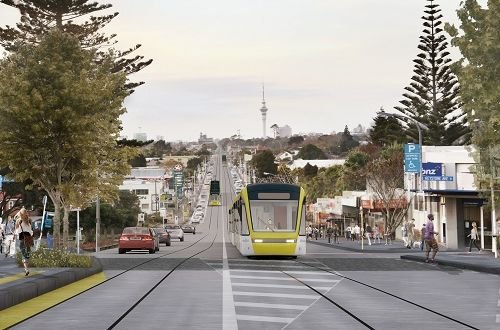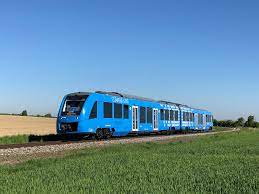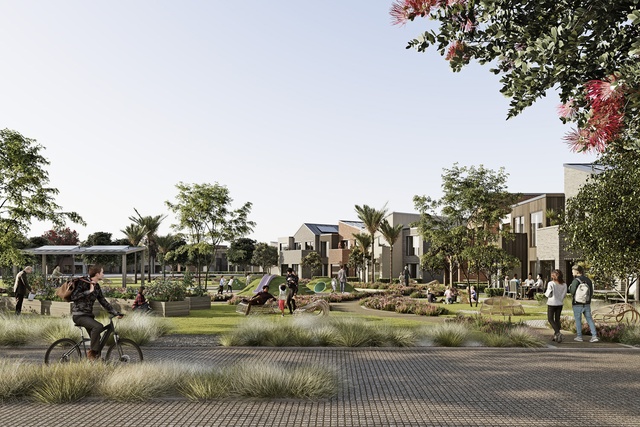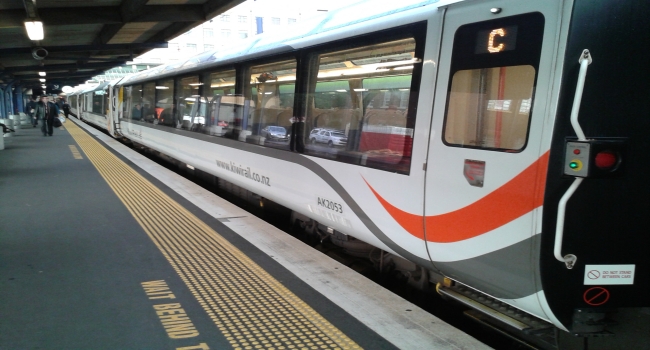An opinion piece by Matt Lowrie first published by Greater Auckland on 21 September 2021 analyzing the recommendations of Auckland Light Rail committe's options for light rail/light metro from Auckland city centre to Auckland airport through Auckland's south western suburbs.
Auckland Light Rail (ALR) have announced they think light rail is the best solution for the City Centre to Mangere corridor, though they are still holding back key details about just what that could be.
Back in April when this latest process was announced the Minister confirmed was keen to reassure us and the public that this wouldn’t be a case of starting from scratch once again. He also made it clear it would be either light rail or light metro that would be built. However, it seems officials have ignored that and indeed started from scratch once again. They’ve spent time investigating a wide range of alternatives for the corridor such as rapid buses, trackless trams, heavy rail and even nutty fantasy solutions like Hyperloop.
Today’s announcement is that their investigations found those alternative solutions either can’t do the job or if they can, can’t do it as well as light rail or light metro would. Looking at the three most sane of these, rapid buses, trackless trams and heavy rail, here’s why they won’t work.
Rapid Buses
This is essentially a dedicated busway option, with them saying:
This option would contribute to a significant overall network issue. There are currently too many buses within the city centre, which is affecting the function and amenity of our streets. Even if they were all electric which is good from a carbon and pollution perspective – it still makes no difference to congestion. There’s simply not enough space for all the buses needed to support Auckland’s continued growth.
In addition, they told me that even if bus numbers in the city centre weren’t an issue, a busway solution would need a lot more space at stations with four lanes needed just like we see on the Northern Busway.
Trackless Trams
As I’ve said before, trackless trams aren’t anything special. The key technologies and features are all things that exist (and have failed) in buses already but are really just being packaged up in a fancy marketing term. However, the key thing they do represent is that we need better buses and that’s not a bad thing. But it’s because of that they’ve become latest favourite idea for concern trolls and those politically and/or ideologically opposed to light rail.
Auckland Light Rail have put out a paper on trackless trams looking at what they are, the benefits of them and some of the downsides and risks of them. The TLDR version is:
- They don’t have enough capacity – with realistic counts being they hold about 170 people per vehicle, about the same as two double decker buses. ALR estimate that during the morning rush hour the vehicles would be full by the time they even got to Mt Roskill and so would leave customers behind. They say “the passenger demand exceeds the available capacity by a factor of 1.48“
- They are heavy so will require the road to be strengthened meaning they’d be just as disruptive to build as light rail.
- They are heavy so will require the road to be strengthened meaning they’d be just as disruptive to build as light rail.
- The guidance systems aren’t as accurate as steel tracks so they would require about an additional 0.7m width corridor compared to light rail. That’s quite a bit in what are already constrained corridors.
Example -
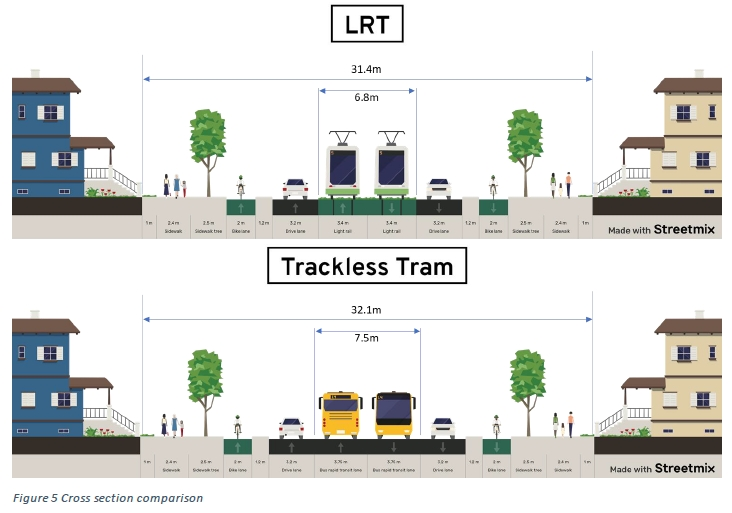
ALR said these widths are based on ATs Transport design manual and doesn’t mean they’re proposing to widen Dominion Rd to over 31m.
I think one big concern they didn’t cover properly in the paper was the risk of supplier lock in. Essentially there are only a couple of companies looking at developing this idea and each with their own technology/implementation. The risk is that in the future when it comes time to add to or replace the fleet we may have no option but the original supplier, if they even still make them. These issues as well as unreliability are why cities like Nancy and Caen in France have or are now their replacing trackless tram like solutions with proper light rail.
Heavy Rail
For heavy rail they looked at three different options, a spur from Puhinui, extending the Onehunga line or building a version of the Avondale to Southdown line from the Western line to Onehunga and then on to the airport – in this one existing Onehunga line trains wouldn’t have access to the airport.
Like we’ve seen previously, the Puhinui option was ruled out as while it serves the airport, it does so at the expense of other services on the existing network and does nothing to address the need for rapid transit in Mangere and on the central isthmus.
Extending the Onehunga Line was also ruled out. While it served Mangere it didn’t serve the central isthmus so would still require a dedicated busway or other solution.
Meanwhile they say the Avondale to Southdown option did perform well but it too doesn’t serve the central isthmus meaning it would still need a busway or other solution. However they say while it performed well it didn’t perform as well as the light rail or light metro options.
I think one area they missed with this assessment is that while there are some benefits and efficiencies from having a single heavy rail system, there are also disadvantages and risks. Essentially, we shouldn’t have a single incident, such as an incident at Aotea or Britomart etc, grind our entire regional public transport system to a halt. In this regard having an independent corridor is a benefit.
The Missing Details
What’s missing from today’s announcement is information on what their even initial assessments of light rail and light metro are. For example, things like estimated costs, station locations, travel times, the level of development needed to justify each mode, the amount of construction disruption that might occur.
They did give a few small details though but had made three options they’re looking at more closely:
- A surface light rail option on Dominion Rd, though it sounds like this will take a tiki-tour through Mangere which isn’t ideal.
- A light metro solution. There was no detail about which corridor this would take but they did say they’ve already dropped the idea from their consultation of an open trench as the services to move and the amount of disruption it would cause meant it would cost about the same as a bored tunnel anyway. They also indicated that light metro stations won’t even be in the town centres the route passes through but ‘nearby’ in an ‘off-line’ location.
- A hybrid solution which sounds like the tunnel option on the isthmus but the surface option through Mangere.
The large amounts of tunnelling mean the second two options will have much higher costs though they argue they will have also have higher capacity and perform better in their models meaning that overall they all have a similar Benefit Cost Ratio.
All three options will have a station in Mangere Town Centre following very strong community support for it. Though that’s not surprising given they released an image showing it in the town centre but then didn’t give any information about the impacts and/or trade-offs that would have.
I also asked if as part of their assessment they’ve considered the potential of each option for other corridors as a way of solving the various capacity and connectivity issues, such as the crosstown light rail option we’ve suggested. They haven’t done so as they say that is out of their scope. It seems bizarre that they can spend time investigating silly ideas like Hyperloop but not spend any time investigating, even at a high-level, the idea of slightly more light rail as part of a network of additional corridors.
The next steps for the project are that at around the end of the month the ALR team will provide their feedback and a recommendation to the Ministry of Transport, who will then review it and prepare it for cabinet to make a decision, which is expected around November or December.
Unfortunately, I can’t help but feel like the ALR team leaning on the scales somewhat to favour the most expensive metro option. That will risk either being rejected by cabinet as unaffordable or the government accepting it then facing a Northern Pathway style campaign against it which they’ll eventually fold to a few months later. Either outcome would be terrible for Auckland.
Matt Lowrie is the editor of the Auckland transport and urban design blog greaterauckland.org.nz
